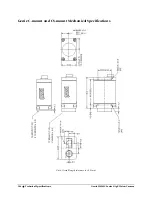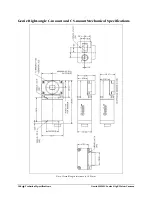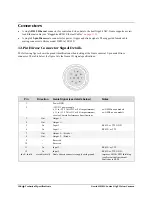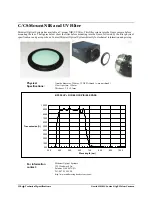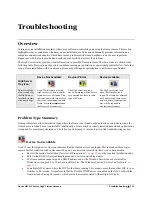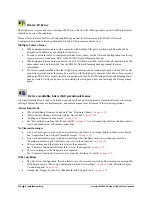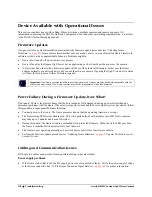
Genie HM-HC Series-GigE Vision Camera
Technical Specifications
117
Additional Lens Parameters (application specific)
There are other lens parameters that are chosen to meet the needs of the vision application. These parameters are
independent of the Genie model (assuming that the Lens Mount and Lens Sensor Size parameters are correct, as
previously covered in this section). A vision system integrator or lens specialist should be consulted when choosing
lenses since there is a trade off between the best lenses and cost. An abridged list of lens parameters follows – all of
which need to be matched to the application.
Focal Length
: Defines the focus point of light from infinity. This parameter is related to the Genie mount
(C or CS mount). See Camera Performance Specifications — Back Focal Distance.
Field of View
: A lens is designed to image objects at some limited distance range, at some positive or
negative magnification. This defines the field of view.
F-Number (aperture)
: The lens aperture defines the amount of light that can pass. Lenses may have fixed
or variable apertures. Additionally the lens aperture affects Depth of Field which defines the distance range
which is in focus when the lens is focus at some specific distance.
Image Resolution and Distortion
: A general definition of image quality. A lens with poor resolution
seems to never be in focus when used to image fine details.
Aberrations (defect, chromatic, spherical)
: Aberrations are specific types of lens faults affecting
resolution and distortion. Lens surface defects or glass faults distort all light or specific colors. Aberrations
are typically more visible when imaging fine details.
Spatial Distortions
: Describes non-linear lens distortions across the field of view. Such distortion limits
the accuracy of measurements made with that lens.
Sensor Handling Instructions
This section reviews proper procedures for handling, cleaning, or storing the Genie camera. Specifically the Genie
sensor needs to be kept clean and away from static discharge to maintain design performance.
Electrostatic Discharge and the Sensor
Cameras sensors containing integrated electronics are susceptible to damage from electrostatic discharge (ESD).
Electrostatic charge introduced to the sensor window surface can induce charge buildup on the underside of the
window that cannot be readily dissipated by the dry nitrogen gas in the sensor package cavity. With charge buildup,
problems such as higher image lag or a highly non-uniform response may occur. The charge normally dissipates
within 24 hours and the sensor returns to normal operation.
Important
: Charge buildup will affect the camera’s flat-field correction calibration. To avoid an erroneous
calibration, ensure that you perform flat-field correction only after a charge buildup has dissipated over 24 hours.
Summary of Contents for Genie HC1024
Page 8: ...6 Contents Genie HM HC Series GigE Vision Camera ...
Page 34: ...32 Installing the Genie Camera Genie HM HC Series GigE Vision Camera ...
Page 94: ...92 Operational Reference Genie HM HC Series GigE Vision Camera ...
Page 98: ...96 Network Overview Tools Genie HM HC Series GigE Vision Camera ...
Page 104: ...102 Sapera CamExpert Guide Genie HM HC Series GigE Vision Camera ...
Page 138: ...136 Glossary of Terms Genie HM HC Series GigE Vision Camera ...


